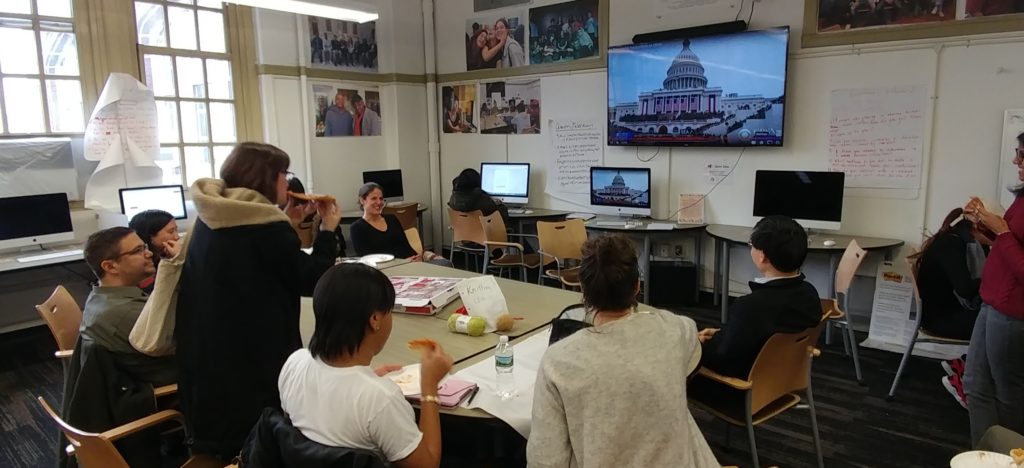So I always want to try to get kids to have big mathematical discussions in class, but it doesn’t always happen. Today a VERY lively mathematical discussion broke out in class. There was a point where like 3 kids were up at the board, vigorously gesturing at the models that were written at the board, while the rest of the class waited breathlessly for one of them to be conferred as “the answer”. It was out of hand.
Now this didn’t exactly go well. I’m not saying a bunch of kids screaming at each other is ‘productive discourse’, but that’s to be understood. The class was actually a class I was subbing and it was the second day the class had ever met, and a huge chunk of kids missed class on the first day. Class started very quiet as to be expected from a new group with a sub teacher, so I wasn’t really emphasizing turn-taking and sharing, which I would later regret.
Here’s the problem that the class was working on:
Draw a diagram 1:
There’s a softball league with three teams, The Alligators, The Bears, The Crocodiles, The Dolphins, The Eagles, The Foxes, The Grizzlies. Each team plays each of the others 3 times. How many games are played?
I asked the students to read the problem as a group. It would have been nice to stop after the first sentence and do a Notice, Wonder, but instead I asked a few questions to make sure people were interpreting the question right.
- “What’s important here?”
- “7 teams, 3 times”
- “What’s a game?”
- “When two teams play each other.”
They started working, and when they did I made sure I only commented on their process, and I didn’t confer if anything was right or not. Anyone who thought they were done I asked them to explain their process further, or to draw the diagram that the teacher requested. At this point the class was pretty low energy, and seemed to be convinced that they had the right answer.
The was a quiet girl in the middle of the U shaped tables whose method I wanted to talk about first. She literally listed out all of the games, and the rest of the kids just immediately started multiplying. The Elmo didn’t work, and the class was pretty low-energy, so I started by writing what I heard her say, which also allowed me to organize the work slightly (re-writing student work isn’t ideal, she should have done it, but it made sense given the context). Once all the games were up there, grumbling started.
- “What happened after the AG team?”
- “Why is there no BA game?”
- “Why doesn’t G play any games?”
After first thinking that she made a mistake, I encouraged the student to defend her work and explain that after we counted the first ‘AB’ game where The Alligators played The Bears, we didn’t need to count The Bears playing the Alligators. Grumbles.
One of the students who disagreed offered to describe what he did. He said that The Alligators are going to play 3 games against The Bears, 3 games against The Crocodiles… and thus they would play 6 games 3 times, or 18 games. So then the rest of the teams would play 18 games. So then a bunch of people agreed with that, but there were now contrary grumbles about the games being double counted. Around this point people stated asking me what the answer was. I said that’s your job to figure it out. If it’s the answer you should be able to defend it. THe students kept talking about it and as they talked I came up with representations to write on the board to show what they were thinking. I drew a table with ABCDEFG along the side and the top and wrote the number 3 in all the spaces so people could see all the games. As people began to question the number of games, I wrote out the decreasing cascade of games 18+15+12+9+6+3+0 as the student in the back who listed the games began a more vigorous defense of her ideas. The main student opposed to this still had questions and offered to come to the board and draw his own diagram. I stepped to the side. Suddenly 3 students were up there having a screaming match and the rest of the class was following along vigorously. One student had defined “playing” as both hosting a game, and travelling to play a game, and so he was counting the double-counted games. I explained how this misunderstanding of the problem led to his different understanding, and if that is the way it was defined, then the problem would have a different answer. The kids were still wanting me to pick an answer, but I think if you understood the problem differently and can explain your work, then that would be your answer. The class quieted down and everyone said their brain hurt.




